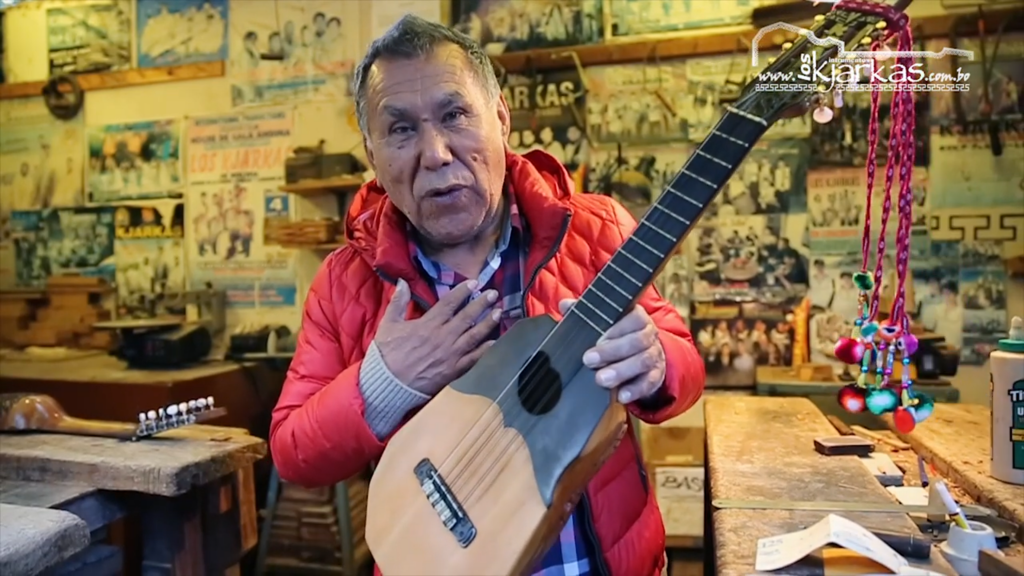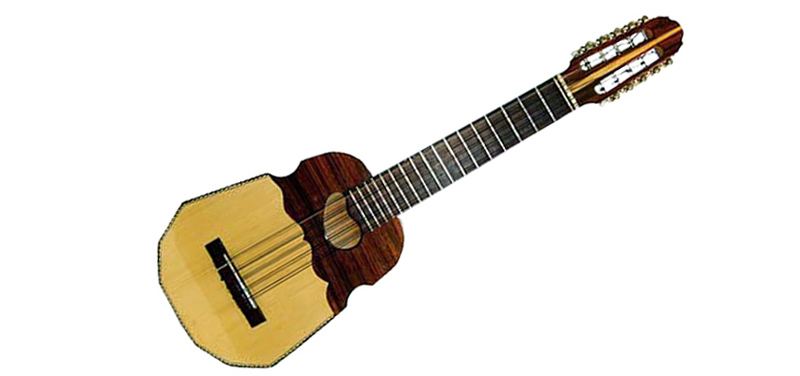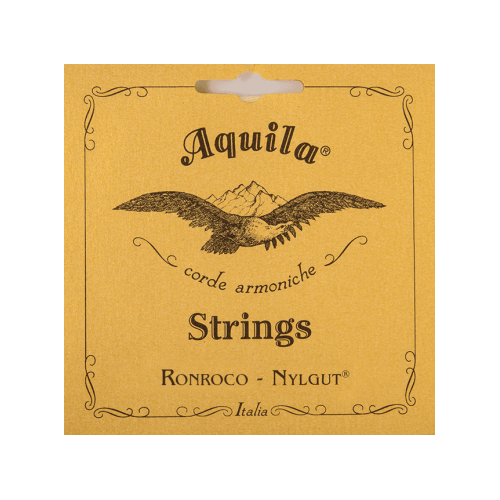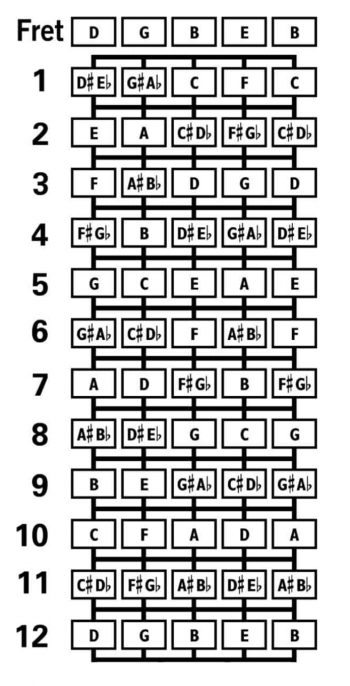History
The ronroco is a stringed musical instrument originating from Bolivia. It was invented in february 1968 by the brothers Gonzalo y Wilson Hermosa, who were looking to get rid of the guitar in their folk music band Los K’jarkas. So Gonzalo came up with the idea of building a lower-sounding charango (roncar means to snore in Spanish), hence the name sometimes adopted « baritone charango » to designate the ronroco. Other Andean regions later adopted this instrument, such as Peru or northwestern Argentina. The instrument was always part of the folk culture of these regions.

In 1998, Gustavo Santaolalla, an Argentinian musician mostly known for his national rock & folk band « Arco Iris » wrote a complete album of instrumental music for ronroco, an instrument he admits he did not master well. This album is the aptly named Ronroco. Little by little, in the following years, several of the songs from this album will be used in films (The Motorcycle Diaries), commercials or documentaries. This will drive Gustavo Santaolalla to write more music with this instrument, for films (Biutiful, The Secret Of Brokeback Mountain, 21 grams…) , documentaries or even video games (The Last Of Us). Camino (2014) and Qhapaq Ñan (2016) are two more albums from Santaolalla in which you can hear ronroco music.
Nowadays, this instrument has been widely popularized by the music of Gustavo Santaolalla, and it is sold and played all over the world, from Japan to the United States, from Germany to Australia…
Construction and Shape
The ronroco is a special instrument for several reasons. First of all, unlike the guitar, the body and the neck of the ronroco are one and the same piece of wood (check this page if you’re interested in knowing everything about the stages of the construction of a ronroco).
The woods most frequently used are naranjillo (for high-end ronroco), mahogany (called Coaba in South America) or Chilean Raulí. The soundboard is usually pine and the fingerboard jacaranda or ebony.
The shape of the instrument is still today consistent with the shape imagined by Gonzalo Hermosa. An asymmetrical and angular shape, which makes the instrument quite recognizable among “small guitars” like ukulele, Venezuelan cuatro, charango :

Luthiers and Manufacturers
Nowadays, modern luthiers can also offer symmetrical instruments, with a flat or curved body, electroacoustic ronrocos, etc. The best known luthiers are Pablo Richter, Pablo Kiernan, Claudio Fichera, Eduardo Cornejo, Patricio Cutain, Mario Figueroa, Pedro Quispe Torrez etc.
To have a ronroco made to your liking, it is possible to contact a luthier online, most of them have either a website, a Facebook or an Instagram account. Most of them live and work in Argentina, Chile or Bolivia, so you’ll have to pay and wait for delivery. The price of the instrument is to be determined between the buyer and the luthier, depending on the complexity or specificity of the request, as well as the quality of the woods used. For a customized ronroco, you can expect no less than $600.00 + delivery. And it is a minimum…
Another option are online websites specializing in the sale of Bolivian handicrafts, including charangos and ronrocos. Let us quote here www.charangomall.com or www.bolivianstuff.com, which seem trustworthy. (Please note that there is no commercial agreement between these sites and ronrocotabs.com).
Strings and Tuning
The ronroco has ten strings arranged in five double courses, each course being played as a single string. 6 out of 10 strings are guitar strings and the remaining 4 are charango strings, which makes another reason for this instrument to be so special, being at a crossroads between guitar and charango.
The strings are generally tuned in unison with the strings of the 3rd course tuned an octave apart. The result of this is a beautiful and natural chorus effect.
Another consequence is that, unlike the guitar or many other stringed instruments, the lowest string of the ronroco is located in the center of the group of strings, which considerably modifies the logic of playing arpeggios, and which can contribute to destabilizing the musicians used to the fingerstyle guitar technique.
There are 3 different tunings for this instrument, the most used being the Argentinian tuning, a fourth below the charango, or D-G-B-E-B.
The Bolivian tuning is a fifth down, or C-F-A-D-A.
Finally, the Chilean tuning is one octave below the charango, or G-C-E-A-E.
The best brand of strings for the ronroco is Aquila, from Italy, find the « Ronroco – Nylgut 3CH » model which allows the Argentinian tuning of the instrument.


Conclusion : Let's Go Get One and Start Playing...
Even if the ronroco is still a fairly confidential instrument, its magnificent sound, popularized by the music of Santaolalla, is increasingly known and recognized. More and more musicians, especially guitarists, discover the instrument, get one and then learn to play it, compose new music or transcribe their favorite music to play it on the ronroco. It is a very inspiring instrument which can enrich any music production. Or which can just be played alone, for the pleasure of feeling like a condor flying over the mountains, the deserts and the pampas on a journey to South America.
